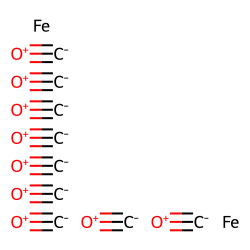Physical Properties
| Property | Value | Unit | Source |
|---|---|---|---|
| EA | 2.73 ± 0.10 | eV | NIST |
| ΔsubH° | 75.00 ± 21.00 | kJ/mol | NIST |
| IE | 7.91 ± 0.01 | eV | NIST |
Temperature Dependent Properties
| Property | Value | Unit | Temperature (K) | Source |
|---|---|---|---|---|
| ΔsubH | 135.30 | kJ/mol | 305.00 | NIST |
Similar Compounds
Find more compounds similar to tri-«mu»-carbonylhexacarbonyldiiron.
Sources
Note: Cheméo is only indexing the data, follow the source links to retrieve the latest data. The source is also providing more information like the publication year, authors and more. Take the time to validate and double check the source of the data.
